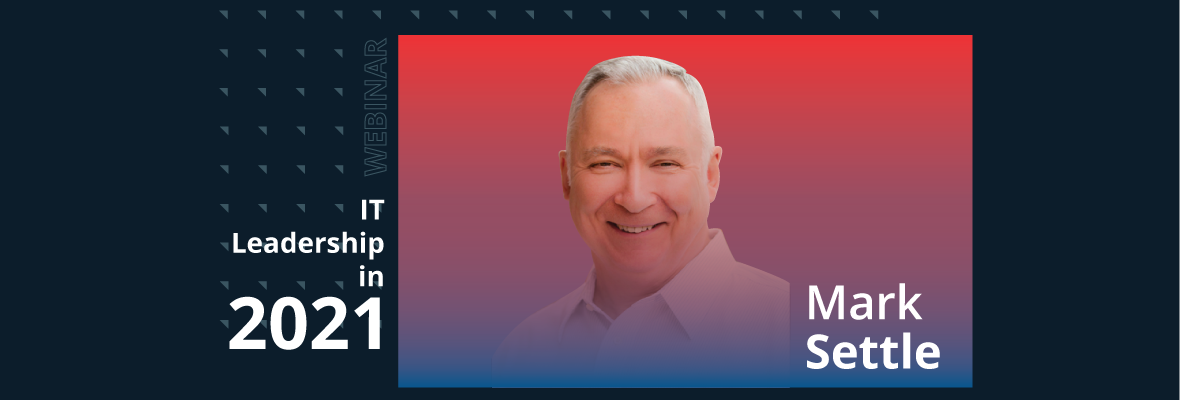The year 2020 was uniquely challenging for business and IT leaders around the world. The sudden shift en masse to remote work put tremendous pressure on IT teams to pivot and keep the show running for business continuity. Going digital is no longer a debate and digital transformation became more than a project in the distant future. So what else has changed in the IT leader’s playbook? We spoke with veteran CIO and author Mark Settle.
OpsRamp: What are some of the key learnings for IT teams in 2020?
MS: The role of IT underwent a seismic change in 2020. I would divide the key learnings for IT teams into two parts:
- Power of Prioritization
In the early days of the pandemic, IT’s number one priority was to equip, secure and support day-to-day business operations which had gone completely remote. This role was not questioned by any other teams. It was plain and apparent that this was the first priority of IT teams. This helped IT teams define their strategic priorities clearly and gave them the license to say ‘no’ to work which was not strategic priority. - Price of Perfection
IT groups are very averse to criticism and go all lengths to anticipate requirements and accommodate use cases however infrequent or inconsequential they are. This led them to test obsessively to eliminate all go-live issues and therefore delaying the rollout. I recall an interesting quote by a CEO of a large, global company. He was asked whether the global rollout of Microsoft Teams across his teams had encountered any problems. He said “You know, we’ve had some bumps along the way, but after two weeks, it was all taken care of to my satisfaction. And then he paused and said “Maybe we should do more projects this way.” Stories like these tell me how the pandemic has forced IT leaders to sacrifice on perfection and get on with the solution. In my view, these are the key areas to look at in 2021: get your strategic prioritization right and avoid the obsession towards perfection while solving IT problems.
OpsRamp: Reactionary or revolutionary: what should be the mindset of an IT leader in 2021?
MS: At times like these, IT and business leaders need to be scrappy. I see a lot of organizations trying to be risk averse by engaging in unending proof of concepts and prototyping activities. In many cases, prototyping can give you good insights into what the solution can deliver. IT leaders need to double down in such cases instead of testing it for endless scenarios.
OpsRamp: In our recent survey we asked about focus areas and security, remote work and collaboration and cloud topped the list. Do you agree?
MS: I believe investment in remote work and collaboration will be a transient phenomenon. The data from the survey reflects businesses which have gone completely remote due to the pandemic. As the effects of the pandemic wane, this is bound to change in 2021. I am surprised that business process automation does not feature here. I predict that there will be significant investment in that area. Moving to the cloud is on a rapid rise and hence the investment in security and compliance will continue to increase. Recently, Capital One, a Fortune 50 company, moved their entire workloads to the cloud.
OpsRamp: Let’s look at hiring trends. Our survey suggests that overall, IT organizations have continued hiring throughout the pandemic.
MS: I am more concerned with the way we hire. There is a massive demand-supply deficit which is not met. The traditional recruitment and screening practices no longer work. We need to think of ideas like vocational skills incubators and transition programs for people in midlife careers. The diversity and inclusion issues add to this concern and we really need to look for creative ways to hire better. Remote work has in a way widened the options to hire since recruiters are no longer restricted by geography. There is a definite increase in fluidity when it comes to hiring practices.
OpsRamp: What are your thoughts on maintaining morale of your teams during remote work?
MS: I think this is so unique to a specific group. Games, group activities do help the teams initially but it loses novelty after a while and people might eventually get cynical about it. I do think people appreciate one on one sessions from time to time. More importantly, people in the leadership role need to communicate the big picture to the team. Meeting expectations and celebrating successes all play an important part in keeping the morale intact. Check out the webinar with Mark for the full conversation.






